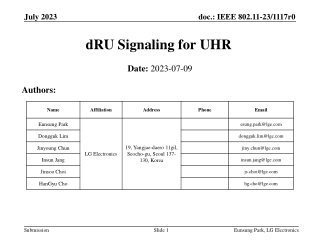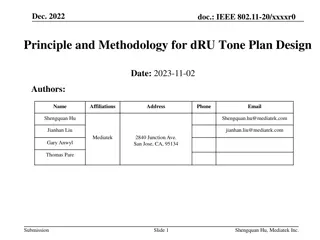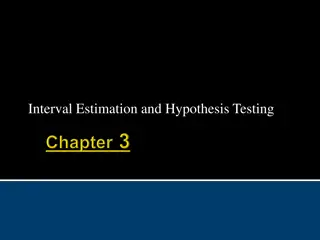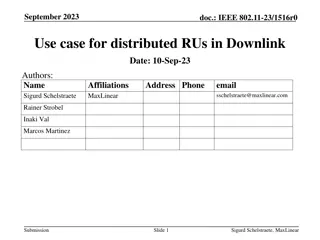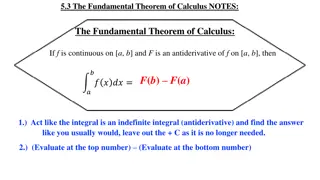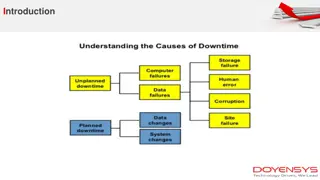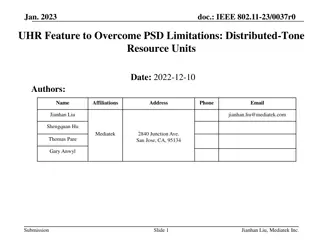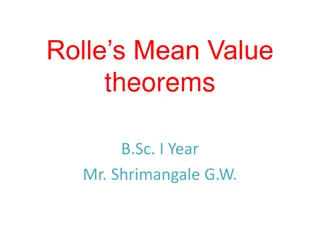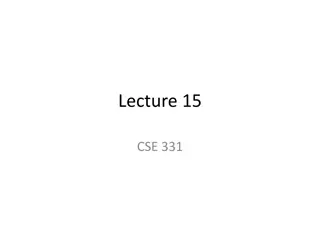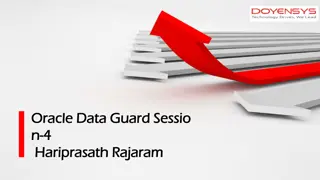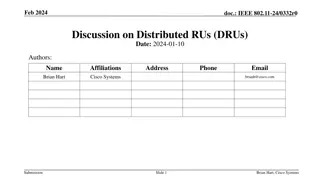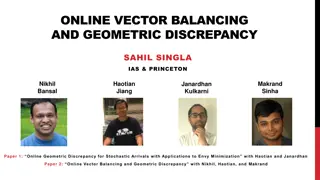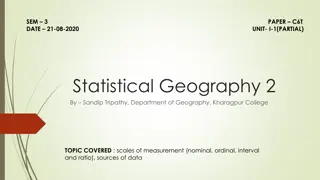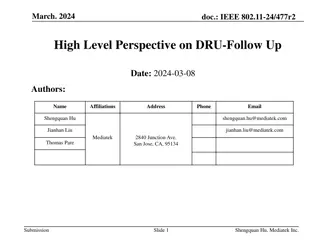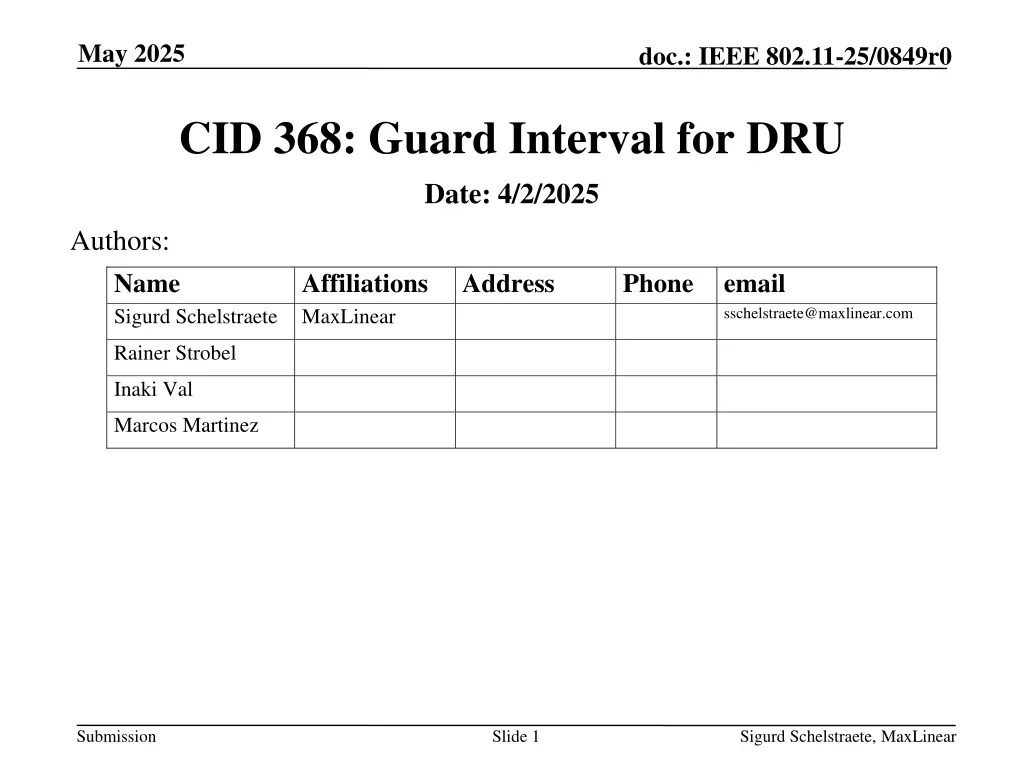
Guard Interval Proposal for IEEE 802.11-25/0849r0 CID 368
"This document proposes introducing a new Guard Interval option for Distributed Remote Units (DRUs) in IEEE 802.11 standards, aiming to enhance flexibility and performance. It discusses the background, benefits, and implications of supporting different Guard Interval values to optimize power gains and user scenarios in UL OFDMA transmissions."
Download Presentation

Please find below an Image/Link to download the presentation.
The content on the website is provided AS IS for your information and personal use only. It may not be sold, licensed, or shared on other websites without obtaining consent from the author. If you encounter any issues during the download, it is possible that the publisher has removed the file from their server.
You are allowed to download the files provided on this website for personal or commercial use, subject to the condition that they are used lawfully. All files are the property of their respective owners.
The content on the website is provided AS IS for your information and personal use only. It may not be sold, licensed, or shared on other websites without obtaining consent from the author.
E N D
Presentation Transcript
May 2025 doc.: IEEE 802.11-25/0849r0 CID 368: Guard Interval for DRU Date: 4/2/2025 Authors: Name Sigurd Schelstraete MaxLinear Affiliations Address Phone email sschelstraete@maxlinear.com Rainer Strobel Inaki Val Marcos Martinez Submission Slide 1 Sigurd Schelstraete, MaxLinear
May 2025 doc.: IEEE 802.11-25/0849r0 Introduction CID 368 comments on the lack of GI=1.6 usec for DRU 368 9.3.1.22.2 42.05 Given that DRUs can de facto only use 4xLTF + 3.2 usec GI, we propose to define a new LTF+GI option for DRU to make sure DRUs have choices that support 1.6 usec (like RRU). Specifiy new entries in the Table (Figure 9-90b4) that combine 4xLTF with 1.6 usec GI This submission provides additional background and motivation for the requested change Submission Slide 2 Sigurd Schelstraete, MaxLinear
May 2025 doc.: IEEE 802.11-25/0849r0 Background Distributed RU (DRU) is only defined with 4xLTF and GI=3.2 usec Regular RUs support 1xLTF, 2xLTF, 4xLTF and GI=0.8, 1.6 and 3.2 usec 4xLTF is needed because interpolation is not straightforward for distributed tone sets However, there is no reason DRUs could not support GI values other than 3.2 usec Only supporting GI=3.2 usec results in a loss of 10% relative to support of GI=1.6 usec See [1] for earlier proposal Submission Slide 3 Sigurd Schelstraete, MaxLinear
May 2025 doc.: IEEE 802.11-25/0849r0 DRU gains The possible power gain of using DRU is closely tied to the number of users in the (UL) OFDMA transmission Specifically: Spreading BW NRU 20 40 80 160 26 52 106 242 484 996 8.06 6.30 3.29 N/A N/A N/A 11.07 8.06 6.30 2.62 N/A N/A 11.07 11.07 8.06 5.05 2.62 N/A 11.07 11.07 11.07 8.06 5.05 2.62 4 users 2 users Submission Slide 4 Sigurd Schelstraete, MaxLinear
May 2025 doc.: IEEE 802.11-25/0849r0 Importance of the Two-user case OFDMA can only work in situations where STAs have simultaneous traffic The larger an OFDMA group, the harder it is to find STAs with simultaneous traffic Moreover, combining STAs at different distances from the AP will degrade the performance of the closer STAs (see e.g. [2]) UL Target Receive Power constraints Ideally, selected STAs should be at a similar distance from the AP It is much more likely to find a 2-STA group that meets the necessary conditions For the reasons above, the two-user case is an important use case for UL OFDMA Submission Slide 5 Sigurd Schelstraete, MaxLinear
May 2025 doc.: IEEE 802.11-25/0849r0 Impact of GI values in two-user case How does the absence of GI=1.6usec affect the performance of DRU in the two-user case relative to RRU? Compare: 1. Performance of RRU with GI=1.6 usec 2. Performance of DRU (2.62 dB gain over RRU) with GI=3.2 usec 3. Performance of DRU (2.62 dB gain over RRU) with GI=1.6 usec Note: Currently not supported in 802.11bn Submission Slide 6 Sigurd Schelstraete, MaxLinear
May 2025 doc.: IEEE 802.11-25/0849r0 RvR In AWGN Performance clearly impacted by absence of GI=3.2 usec A 2.62 dB gain can be seen for DRU that support 1.6 usec GI DRU with 3.2 usec GI can perform worse than RRU for mid/high MCS Submission Slide 7 Sigurd Schelstraete, MaxLinear
May 2025 doc.: IEEE 802.11-25/0849r0 SNR gain as function of MCS Gains calculated relative to RRU with 1.6 usec GI Expected gain of 2.62 dB quickly disappears Performance of DRU can be worse than RRU for higher MCS Submission Slide 8 Sigurd Schelstraete, MaxLinear
May 2025 doc.: IEEE 802.11-25/0849r0 Conclusion Not providing support for 1.6 usec GI in DRUs can significantly degrade the performance of DRU in the two-user case We propose to add GI=1.6 usec as a possible option for DRU to mitigate the losses Submission Slide 9 Sigurd Schelstraete, MaxLinear
May 2025 doc.: IEEE 802.11-25/0849r0 References [1] 802.11-25/1480, UHR-LTF for DRU [2] 802.11-24/1778, Distributed RU Distortion, Beamforming, Power Control Submission Slide 10 Sigurd Schelstraete, MaxLinear

